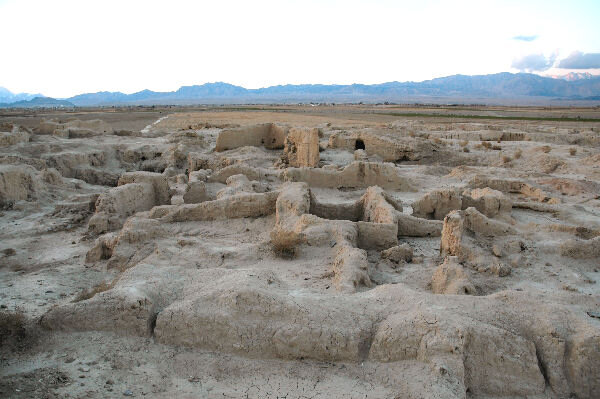Explore Tepe Hesar with finds from Chalcolithic Age to Sasanian era

TEHRAN - Tepe Hesar, which bears cultural periods from the Chalcolithic Age to the Sasanian period, is one of the most famous archaeological sites in Iran.
Situated on the southern outskirts of Damghan, northcentral Iran, Tepe Hesar is reportedly one of the world’s five archaeological hills of the Iron Age, and the archaeological hill is considered as of the oldest prehistorical sites in the Iranian plateau as well.
Identified in 1880, Tepe Hesar was excavated in 1925 and 1931-1932 when the construction of the Trans-Iranian Railway cuts through the main mound. It was one of the first Chalcolithic and Bronze Age excavations in this area, and the stratigraphy has been very important to date similar sites. In 1976, research was briefly resumed and radiocarbon measures were taken.
The oldest layer, Hesar I, belongs to the Copper Age (Chalcolithic; after 3800 BC); it is about as old as Susa and resembles Sialk III, by which it appears to have been influenced, according to livius.org, a website on ancient history written and maintained since 1996 by the Dutch historian Jona Lendering, according to Livius.org; a website on ancient history written and maintained since 1996 by the Dutch historian Jona Lendering.
Hesar II, which starts in about 3600 BC, is marked by the appearance of burnished grey pottery and the first objects made of bronze. Among the finds are long-shaped bottles.
The next phase, Hesar III, began in about 2800 BC and saw nice metal work and grey pottery similar to Turan Tepe, which is on the other side of the Alborz mountain range. Some three centuries later, when Hesar III ended, a part of the town was violently destroyed. The ruin that is now known as the "Burnt Building", situated in the western part of the hill, is the most recognizable remainder of this catastrophe. Archaeologists have found stone arrowheads and charred battle victims.
After this period, the site was abandoned and there was a hiatus for about five or six centuries. After about 1350 BC, people returned and settled on smaller mounds in the neighborhood of the ancient mound. If the main hill was occupied, those recent layers have eroded.
The smaller mounds from the Iron Age and later have not been investigated, although surface finds prove that Tepe Hesar remained inhabited, as one could have expected, because this part of the Silk Road, from Rhagae to Susia, continued to be in use. In the west, the Median kingdom came into being in the second quarter of the first millennium; its armies came along the road and subdued the Parthians. Later, both Media and Parthia were part of the Achaemenid and Seleucid Empires, until the Parthians turned the tables and united Iran. Directly west of Tepe Hesar, Hecatompylos flourished.
Damghan lies at an elevation of 1,200 meters, just southeast of the Alborz Mountains on a large, barren gravel plain. It is on the road and railway between Tehran and Mashhad. Damghan was an important town and capital of the medieval province of Qumis but was destroyed by Afghans in 1723. The town trades in pistachios and almonds.
AFM/
Leave a Comment